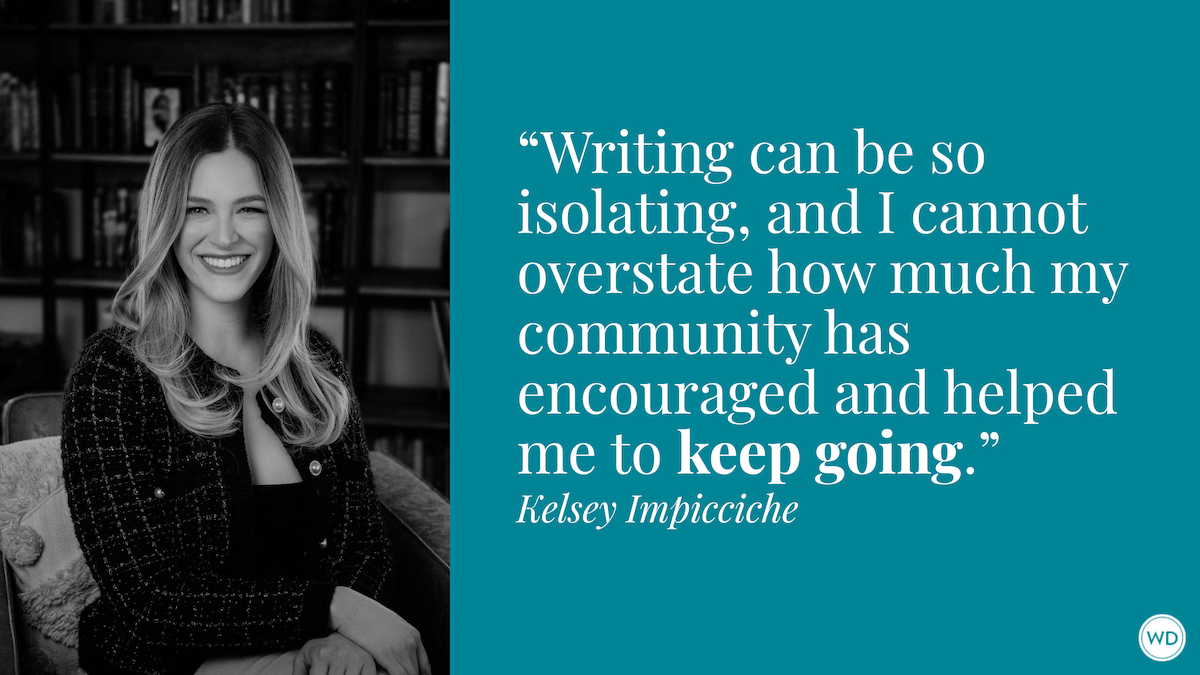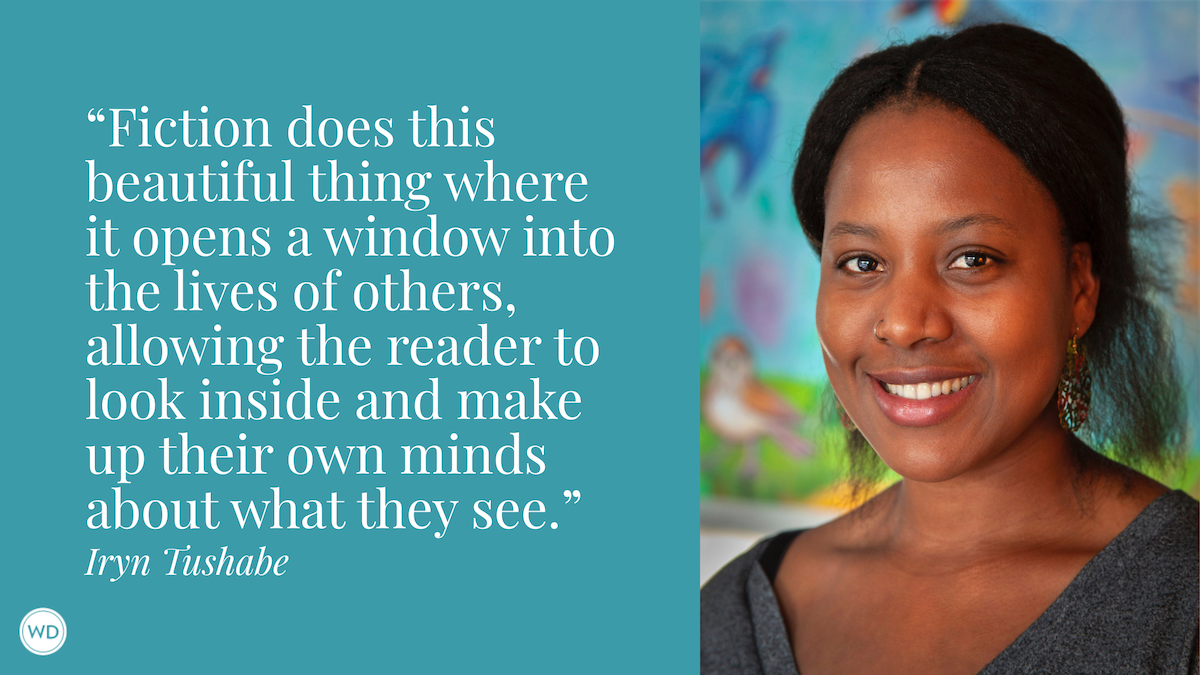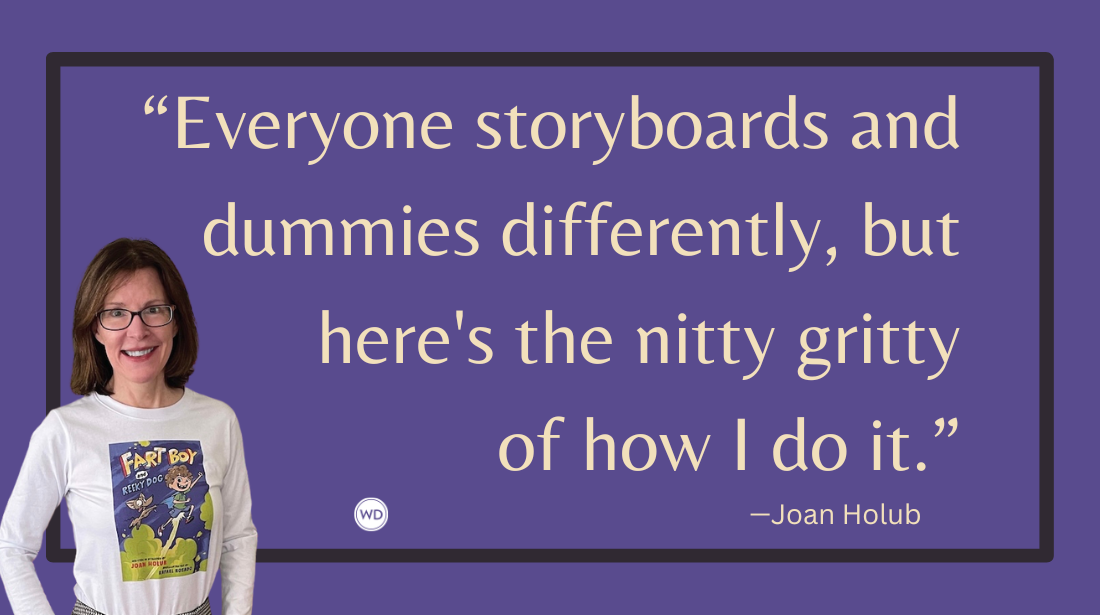How One Nonsense Word Helps Me Craft Better Character-Based Suspense
Author and award-winning playwright Nat Cassidy shares how one nonsense word helps him craft better character-based suspense.
Back in my playwriting days, whenever I was watching a particularly good show, I would start thinking of a word.
Then, whenever I was watching a show that wasn’t quite to my liking, I’d start thinking of that same word.
Then, whenever I sat down to work on something of my own—yup, here came that word again.
The word was “SHARP,” but it doesn’t mean what you think it means.
Lemme back up.
It might be helpful to know that, back in those playwriting days, I was specifically a horror playwright. I point this out because the mechanics of a horror play are a little different than your garden variety stage drama or comedy. Sure, the principles are the same—you’re trying to tell a good, satisfying story just like any other playwright—but there are a few additional expectations that make writing a horror play just a little bit harder. After all, you’re also looking to conjure up suspense, dread, and fear in your audience, and those are really challenging emotions to evoke without the benefit of a forced camera perspective or a narrow frame or post-production special effects or one of those soundtracks where everything gets really quiet AND THEN GETS REALLY LOUD.
When writing suspenseful, speculative stories for the stage, where you mostly only have the benefit of some props, a set, and whatever the human body and/or voice can do, you have to learn a few additional tricks. You have to learn how to fashion suspense and instill dread and fear using only your two dramatic fundamentals: characters and circumstances.
That’s where “SHARP” came in. Not only was it a short and pithy descriptor for that feeling a good, dynamic story gives you, it was also a handy acronym for a few key ingredients to keep in mind. Things that were present in the plays I was enjoying. Things that were absent in the ones I was not. Things I wanted to make sure my own work contained.
Lemme back up again, though.
What About the Nonsense Word?
I can hear you asking, “Wait, but the title of this article says it’s a ‘nonsense’ word! WE WERE PROMISED A NONSENSE WORD!”
The thing is, I’ve always been bad at leaving well enough alone; it wasn’t long before I started thinking of other letters to add to my pithy catchall. “SHARP” quickly expanded into the far more unwieldy “SHARPAWIDUS,” which I’ll admit, isn’t quite as snappy and sounds more like either an obscure dinosaur or a dubstep DJ (but perhaps I repeat myself).
Still. It gets the job done for me. “SHARP”—later “SHARPAWIDUS”—became a sort of checklist. Not a prescriptive formula or anything so crass; more like, an Aristotelian collation of elements I've observed are particularly satisfying, and which I can consult whenever I feel like I’m stuck in the writing or revising trenches.
I’m not a playwright anymore (at least in any dedicated way; you can’t ever truly leave the theater behind). Now I spend my energy and time writing books, my first and truest love. And despite the fact that every novelist has an unlimited budget when it comes to elaborate set pieces and special effects, as well as an ability to direct the audience’s eye to specific things no matter how small, I find I still constantly refer back to the lessons I learned as a playwright to help craft a style of suspense that’s necessarily rooted in character and circumstance.
In fact, my newest book, When the Wolf Comes Home (wherever books are sold, April 22, 2025), was written in an explicit attempt to marry both approaches. I wanted to embrace the novel’s ability to create elaborate set pieces of action and chaos and external threat, but also ensure that as much of the breathless, seat-gripping, palm-besweattening suspense came as much from the characters and their circumstances as any no-budget play I’ve ever written. (So far, early response seems to indicate that I did my job—Stephen King even called it “a classic”—for which I’m exceedingly grateful and gratified.)
When Writer's Digest asked me to write a little about creating suspense, then, I figured I could trot out the old classic tricks like “short sentences,” “onomatopoeia,” “escalating action,” “show the bomb under the table” (all of which are classics for a reason; they are definitely effective tricks you should use) . . . or I could introduce you to my friend, SHARPAWIDUS, in the hopes that, at the very least, it’s ridiculous enough to help you unlock your own nonsense word to describe the things you think should be in a good, suspenseful story.
I should probably tell you what the hell this all means, though, so lemme back up a bit more.
SHARPAWIDUS
Stands for:
Stakes
Humor
Anticipation
Resistance
Plots
Animosity
Withholding
Interruptions
Decisions
Unsustainability
Stichomythia
Some of these might need some elaboration, so, you know the drill by now. Lemme back up one more time.
Stakes
This one’s obvious, I know, but it's amazing how often remembering stakes is the key to everything. Think they're high enough? Raise 'em. Is it the next chapter? Raise 'em again. But what does it mean to raise the stakes?
It means you’ve gotta give your character(s) something they clearly don’t want to lose, and then make it more and more likely they’ll lose it. Better yet, make them lose it and see what else they stand to lose now. Whether it’s their safety or their innocence or their understanding of the world—or whether it’s an arm or a head or a loved one.
As soon as we really feel what matters to your character(s), the more we’ll begin dreading the idea that we might have to get it taken away. That’s where the suspense comes in . . . and then rises as we watch the character(s) try to deal with / prevent their losses in hopefully unpredictable ways.
Humor
This one might be the hardest to calibrate. Too much humor and your suspense deflates. Not enough humor and the experience becomes a slog. The trick, I find, is to make sure the humor is grounded—or, to put it another way, that it’s coming from the inside, not the outside.
One way I like to think of it is to remember that no character wants to be in tension . . . but you as the author don’t have to give your characters what they want. If the tension is still there after the joke fails to dispel it? Oooh, that can make for some exquisite suspense.
Anticipation
Another obvious one, almost to the point of redundancy, but it can be helpful to remember that when we talk about “suspense,” we really mean a feeling of anticipation. When we know something is going to happen next and we want to know how it plays out.
You can help facilitate this feeling by putting approaching landmarks on the story timeline. Give the characters things to anticipate, whether they’re big events (the prom is next week!) or tiny reactions (she’s going to be so mad at me!). Mix this ingredient with a little bit of Interruptions (see below) and you’ve got some combustible suspense fuel.
Resistance
Not in the Star Wars Rebel Alliance sense, but rather something more internal. In fact, this idea actually comes from acting training. Some of the best notes I’ve ever received as an actor were reminders to resist the story you’re trying to perform.
A few examples: The most compelling way to play drunk is to try to act as sober as possible; the most realistic-looking way to perform a fall is to try to remain standing while your body goes down; the most effective way to elicit sobs from the audience is have your character desperately try not to sob.
Taking the premise of this idea into the writing realm, then: If there’s an emotional state you hope to create, or a payoff you hope to reach, the more your characters can actively resist it—until the absolute breaking point—the more engaged and invested your reader will become. Note that this doesn’t mean avoiding or ignoring the situation; I like the word Resistance because it very much implies an active fight against what may or may not be inevitable.
Plots
Note that it's "plots," not "plot" (nor "plotz," bubbeleh). I don't mean this in a "Good books have a story" way. You already have a story; why else would you be writing? Rather, to activate that story, make sure your characters are plotting things. It doesn't have to be George R. R. Martin-level schemery, but it's often not enough to say every character needs a "want"—try giving them each a private plan they're actively following, too.
The suspense comes from wondering which plots, if any, will succeed, and watching them ricochet in unexpected ways. To quote William Shakespeare (another playwright of some note): “O, 'tis most sweet, when in one line two crafts directly meet.”
Animosity
It’s great when someone central to your story dislikes something—or someone—so much that it propels them. The thing I like about this word is it implies an activating, animating force. It feels more dynamic than just plain old hate.
Also, hate is hard to hide; animosity can be tucked away for later. It can create false pretenses, betrayals, uncomfortable alliances, etc. All the stuff of good, suspenseful drama—particularly if the reader knows about this animosity but other characters don’t. (I find this is a particularly useful element to keep in mind when juggling an ensemble.)
Withholding
Here’s a technical one. Whether it’s depicting a character’s reaction before revealing what they’re reacting to, or ending a chapter on a cliffhanger, or having someone remember something important but not revealing the memory until a choicer moment, withholding bits of information from the reader is a great way to keep them on the hook for more.
The tricky part is to not overdo it, because then it can start to feel like a cheat. Or worse, we can forget what we were supposed to be waiting for in the first place.
Interruptions
This is a big one, and it’s kind of like the external version of Resistance. If you want to keep people on their toes, don’t let your scenes end the way they’re supposed to. There’s probably an ending or a button that feels *correct* to you, which means chances are the reader feels that way, too.
That’s a great opportunity to knock people off balance a little. Interrupt that *correct* ending with something that forces the characters to make another, messier decision, big or small (We love Decisions!). I like to use Interruptions as a rule for dialogue, too.
In life, the opportunities to monologue are few and far between. One of the best acting observations I ever got (from director Anne Bogart) is something I've carried over into my writing: Almost always, the person you're talking to knows what you're saying before you finish your sentence. Choose the moments where a character can speak uninterrupted very, very wisely. (See also “Stichomythia” below.)
Decisions
If I can be grossly reductive for a moment, I think the main reason we love stories is because we’re creatures who learn by example. We’re fundamentally compelled to see how hypothetical situations and/or conundrums might play out. (That’s why stories where the reactions seem arbitrary or ungrounded can feel almost like a betrayal.)
As such, the more Decisions you can force your character(s) to make, the better. As long as those Decisions feel believable, or at least intriguing, we’ll keep leaning in to see what happens next. There’s such delicious suspense to be found in waiting to see what a character will do . . . and also then whether or not they did the right thing.
Unsustainability
The worst things in life are the best things for stories, aren’t they? If there’s a situational element or a relationship or a character trait in your story that we just know is going to fall apart, we’re gonna be watching with glee and/or horror for the moment we’re proven right.
Stichomythia
One more technical one. This is a dramaturgical term describing when two characters trade alternating lines of dialogue in what would otherwise be a single verse speech. What it really means, though, is that great, tennis-match-feeling of characters trading short, snappy reports until the exchange builds to a climax. This is a wonderful technique for dialogue writing (see Interruptions) above, but the concept of stichomythia can carry into the structure of a good suspense scene, as well.
Rather than play a rising event through one character’s POV, try breaking it up into alternating character perspectives, so we get a more panoramic sense of a situation that’s bigger than one person can take in. This helps things move faster and also allows you for all sorts of mini-cliffhangers that ratchet up the tension even further.
(I think, as far as text layout goes, Stichomythia might also be another word for “skimmability,” too. This might be controversial, or even heretical, to say but in a good action scene, skimmability can be an asset. You want your reader to feel a certain rush trying to find out what happens next, and short lines that alternate information make for a great way to build a breathless momentum.)
***
And there you have it! “SHARPAWIDUS.” What do you think? Too unwieldy? Too general? Too obvious? Hopefully I backed up enough to give you enough runway to—
Oh wait! I totally forgot one more letter! One more essential ingredient to suspense. Maybe even the most important one. Namely:
WEREWOLVES
I mean, what is a werewolf but a ticking time bomb? A character who knows a bad thing is going to happen at a predictable, but unstoppable, time—and also a character who can’t always be themselves. A shapeshifter. Every good suspense story needs a shapeshifter, right?
Take, for instance, When the Wolf Comes Home. It’s a story of a young woman named Jess, who’s a frustrated actress living out in LA, working the graveyard shift at a depressing 24-hour diner. One night, after a particularly dreadful shift, she stumbles home, only to find a scared little boy hiding in the bushes. Before she can figure out what to do with him, a horrifying wolf-like monster attacks her apartment complex, and Jess winds up running for her life with the little boy in tow. She quickly realizes this monster is the boy’s father and, unfortunately for her, he'll stop at nothing to get his son back. Jess is about to learn that when the wolf comes home . . . no one will be spared . . .
Did I mention it’s available wherever books are sold, April 22, 2025?
Thanks for reading.
Check out Nat Cassidy's When the Wolf Comes Home here:
(WD uses affiliate links)








